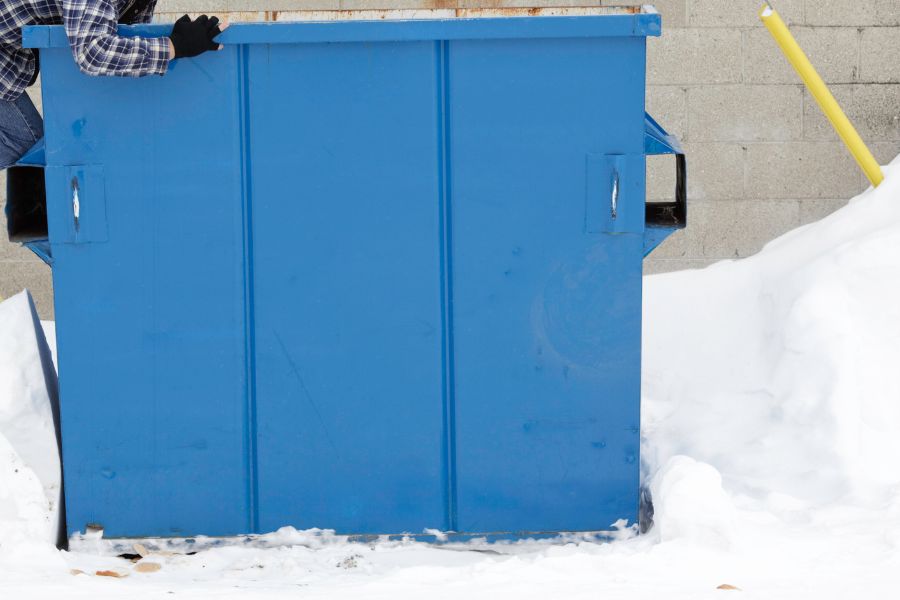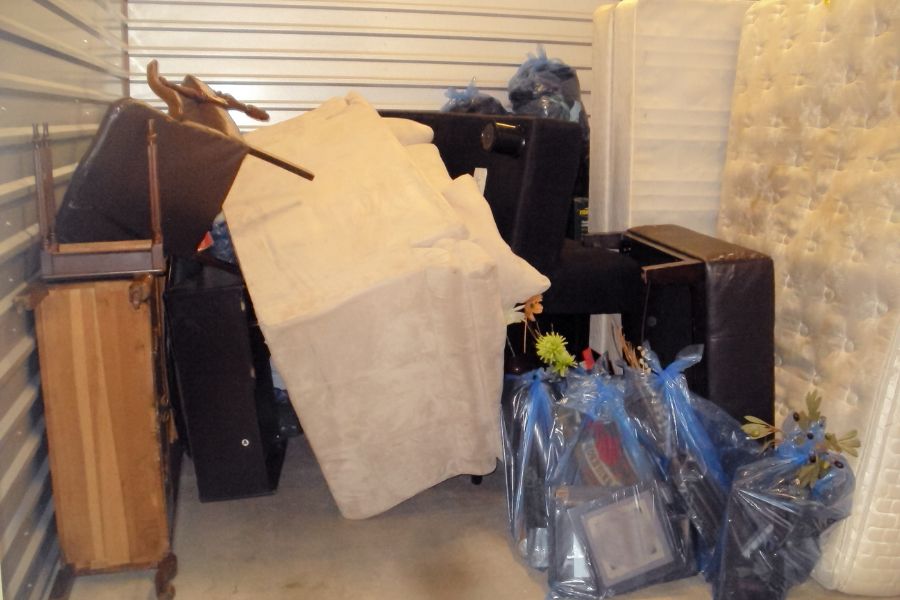

Premier Bin rental Service in Toronto and the GTA

November 19, 2025
One thing is certain if you’re planning a renovation, garage cleanout, or property maintenance project in Toronto or the GTA this winter: if you’re unprepared, dealing with snow, ice, and freezing temperatures can turn what should be a straightforward dumpster rental into a messy, dangerous situation. Winter rentals present different difficulties than spring or summer rentals, such as slick surfaces, water accumulation, plow interference, and severe weather delays.
At Bins Toronto, we deliver bins year-round across the city and surrounding areas like Mississauga, Brampton, Markham, Vaughan, and Hamilton. We’ve seen it all, from dumpsters buried under snowdrifts to customers trying to load frozen debris at -15°C. That’s why we’ve put together this comprehensive guide packed with real advice, local regulations, and practical steps so you can rent a winter dumpster safely, legally, and without headaches.
The most crucial choice you will make this winter is this one. An incorrectly positioned bin could slip, interfere with city snow removal operations, or even endanger pedestrians. All of that is what we wish to avoid!
Freeze-thaw cycles are common in Toronto and the GTA, transforming driveways into instant skating rinks. Melting snow may refreeze beneath your bin if it is placed directly on concrete or asphalt, effectively locking the container to the ground. This complicates our pickup procedure and makes loading risky (slippery footing!).
Furthermore, a lot of homeowners are unaware that putting a trash can on a sidewalk or public street requires a permit. Plow crews and city inspectors maintain a much closer relationship during the snow season.

Snow routes are prioritized for plowing and salting. Parking or placing obstructions like dumpsters on these streets, even temporarily, is strictly enforced.
| City | Is a Permit Required? | Snow Route Enforcement Notes |
|---|---|---|
| Toronto | Yes (Street Occupation) | Bins on priority snow routes may be removed immediately without notice |
| Mississauga | Yes | Plows operate 24/7 during storms; bins must be off roadways by 7 AM |
| Markham | Yes | Must submit site plan showing clearance from travel lanes |
| Vaughan | Yes | Insurance proof required; violations reported to Public Works |
| Hamilton | Yes | Sidewalk closures require additional fee and signage |
Always check your city’s snow route map before booking. In Toronto, you can view active routes at Toronto.ca/plowTO.
When renting a winter dumpster, what is one of the most common mistakes people make? allowing the rain and snow to fill it. Moisture causes materials inside to freeze solid, making them impossible to unload, adds significant weight, and causes contamination.
The overall load is greatly increased by waterlogged waste. Based on landfill tipping fees, the majority of dumpster providers have weight restrictions. If you go over those, you may be charged hundreds of dollars more for being overweight.
Additionally, frozen contents may indicate improper emptying of the bin. Our crew won’t be able to dispose of drywall, wood, or insulation if it becomes a single icy mass. Either pay for an additional day or disassemble it by hand, neither of which is ideal.
We recommend scheduling delivery after major storms whenever possible. Waking up to a half-buried bin defeats the purpose of easy cleanup.

Winter weather in the GTA is unpredictable. One day it’s -2°C with flurries, the next it’s a full-blown blizzard. These shifts impact both availability and service reliability.
Our trucks run every day, operating around the clock unless conditions become critically unsafe. We maintain our service commitment even in tough weather, so you can rely on us.
While other contractors might adjust their schedule for short daylight hours, Bins Toronto operates 24/7, ensuring you can load and work on your schedule, day or night.
We proactively notify customers of delays due to weather. But remember, communication goes both ways. If your project finishes early or gets pushed back, let us know right away.
Loading a dumpster in winter is physically harder and riskier than in milder seasons. Numb fingers, slippery boots, and bulky clothing all increase the chance of injury.
Frostbite, slips, falls, and muscle strains are common when handling debris in sub-zero temps. Hardened materials like frozen drywall or compacted insulation are tougher to lift and maneuver.
Working near a bin on ice-covered ground puts you at serious risk, especially if you’re standing inside the container or lifting overhead.
We want you to get your project done without a trip to the ER. Loading a bin in January is a lot different than doing it in July, cold muscles and icy ground don’t mix well. Here are a few practical rules we live by to keep things safe:
If it feels unsafe, stop. Wait for better conditions or ask for help. No project is worth an ER visit.
Many assume winter means relaxed enforcement. Not true, Toronto and GTA cities enforce street occupancy rules year-round, and often increase monitoring during the snow season to keep roads clear.
Yes. The same rules apply regardless of season. If your bin sits on a public street, sidewalk, or boulevard, you likely need a Street Occupation Permit.

| City | Permit Name | Fee Range | Key Requirements |
|---|---|---|---|
| Toronto | Street Occupation Permit | $100–$300+ | Site plan, insurance, 10-day advance notice |
| Mississauga | Temporary Road Occupation | $150–$400 | Proof of insurance, construction details |
| Markham | Road Occupancy Permit | $125–$350 | Traffic control plan if near intersections |
| Vaughan | ROP – Road Occupancy | $200–$500 | Insurance, access plans, site photos |
| Hamilton | Lane/Sidewalk Closure Permit | $60–$130 per 14 days | Signage, damage deposit, early submission |
In Toronto, Construction Hubs, high-density development zones, carry a 25% fee increase due to added city coordination services. Always verify your location before applying.
It happens. Municipal plows operate aggressively during storms and aren’t liable for damage to unmarked or improperly placed bins.
If your bin gets buried, dig it out. We can’t send a truck to search for a missing container under three feet of snow.
In Toronto’s winter, renting a dumpster doesn’t have to be difficult. Whether you’re cleaning out a garage, handling post-storm debris, or remodeling a basement, you can manage waste effectively and safely with the proper planning, placement, and protection.
These five life-saving suggestions cover everything from navigating permits and avoiding costly errors to avoiding icy hazards. At Bins Toronto, we provide year-round delivery throughout the GTA and assist our clients with knowledgeable advice, dependable service, and open policies.
Don’t let the cold stop you. Make your winter-ready bin reservation now to take on your project with assurance.